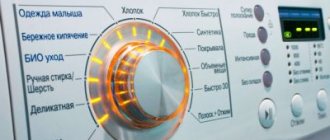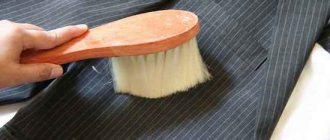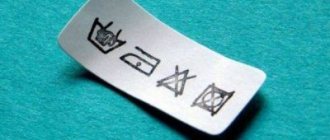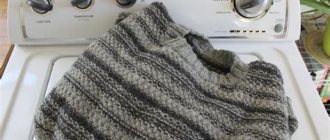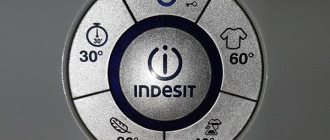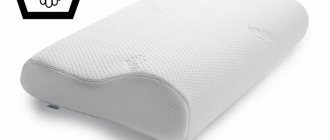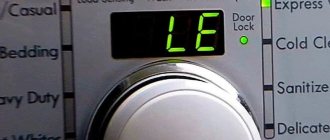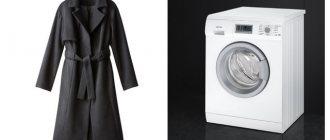Equipped with many useful functions, the automatic washing machine simplifies and speeds up the difficult process of washing dirty laundry.
But among all the variety of work programs, few people pay attention to the “Pre-wash” option.
What does pre-wash mean, what is its purpose and how to use this program correctly we will tell you in more detail.
Where to put what in the washing machine?
But many people don’t know where to put the stain remover. The product is poured into the same container as the washing powder. The stain remover comes off easily when washing. Using a stain remover is an opportunity to remove stains from any item.
Interesting materials:
How to remove water-based paint from wallpaper? How to remove water-based paint from clothes? How to remove water-based paint from a ceiling? How to remove water-based paint? How to remove depilatory wax from a sofa? How to remove depilatory wax from dishes? How to remove wax from a wax melter? How to remove candle wax from carpet? How to remove candle wax from furniture? How to remove wax after wax strips?
Washing before washing
Pre-washing is often compared to soaking. However, this is not a completely fair comparison. This mode replaces manual washing of clothes. It is used if things are very dirty or have stubborn stains. For example, when you need to wash work clothes, a tablecloth accidentally spilled with drinks, or children's pants in which the child fell into a puddle.
Subtleties of use
All information about the modes can be found in the instructions for the machine. There are certain subtleties in using each.
Here's what it says about prewash:
- It is carried out only with dry powder. If you open the instructions for using the automatic machine, you will find information that the main compartment cannot be filled with gel while this function is turned on. The fact is that the liquid product smoothly slides down the tube. When it comes to the main cycle, the compartment is already empty.
- The function is not compatible with express modes. If it doesn't want to turn on, then most likely you chose an express wash. The manufacturers decided that it was not needed here. It is logical that if you need to wash things quickly, it means that the laundry is not so dirty and does not require pre-washing.
- Manufacturers prohibit pouring anything other than washing powder into the pre-wash compartment.
We recommend: Is it possible to wash a respirator or does it lose its properties?
Explanation of icons
The designations for washing and processing processes on different models of washing machines differ from each other, since all manufacturers themselves determine which image, in their opinion, will be most understandable to the user. We will talk about the same processes, differing only in their iconic execution.
Washing steps are indicated by:
- circle or diamond with a dash – start/stop;
- triangle and 2 lines – start/pause;
- spiral - spin;
- crossed out spiral – no spin;
- a basin of water with a wriggling line on top - washing;
- a bowl of water and 2 dashes – intensive wash;
- a basin in which the hands are lowered - hand washing;
- basin and 1 line – pre-wash;
- basin and 2 dashes – daily washing;
- basin with items - quick wash;
- snowflake - cold wash;
- a basin with dotted lines or a shower inside – rinsing;
- basin with an arrow - draining water;
- sun - drying;
- iron - ironing.
Drawn symbols for different types of fabrics:
- cotton - cloud;
- synthetics - flask or hanger;
- silk - feather;
- jeans - trousers;
- wool - a ball or skein of thread.
The main modes have:
- thing with spots - intensive mode;
- a flower that looks like a chamomile - delicate mode;
- wood – eco mode (economical washing).
The following video describes the washing modes in the LG washing machine.
How does the function work?
The “Pre-wash” program is compatible with almost all modes: “Hand wash”, “Cotton”, “Synthetics”, “Delicates”, “Intensive”, “Wool”, “Jeans” and others. This is usually an additional option that can be turned on or off. And only in some modes is it combined with the main program, for example, “Cotton” at 90 degrees.
How does pre-wash work?
- The washing machine takes in water and heats it to 30 degrees. At this temperature, stains from fruit, coffee, and blood are easily removed.
- Then the powder is taken from the compartment, which is intended for the preliminary cycle. The detergent remains intact in the main tray.
- The drum rotates slowly to clean the laundry.
- The duration of the mode ranges from 30 minutes to 2 hours, depending on the model of the washing machine.
- Then the water is drained and the main wash begins.
While the program is running, a powder tray is used, indicated by a unit (Roman or Arabic) or the English letter A.
What types of washing machines are there?
Manufacturers of washing machines produce products of different models. Each of them has its own characteristics, and they are all divided into three types:
- Activator machines or semi-automatic machines.
- Ultrasonic “washers”.
- Modern (standard) automatic machines.
Before choosing a suitable washing machine, you need to carefully study the information about it, reviews of those who have used it, and choose a model specifically for your tasks and requirements. And also according to your financial capabilities. Below are the advantages and disadvantages of all three types of washing machines.
An ultrasonic machine is a small round device that fits comfortably in your hand. Before starting work, it must be connected to an outlet. It is used mainly in the country, when there is no standard washing machine at hand, or in semi-camping conditions. The essence of its work is that before using such a device, the laundry is soaked in a soap solution, and then the machine itself turns on and the washing begins. After this, you will also have to rinse and wring out with your hands, and rinse the device itself and wipe it thoroughly. A dubious pleasure, but many people use it.
Semi-automatic machines are small, compact and weigh little. Such a machine can be mounted on the edge of the bathroom, and after washing, hidden in the pantry. But this is where the list of advantages ends, and continuous disadvantages begin. Before washing, you need to heat the water, pour it into the machine, and do not forget to stir the powder or other product into it. And only after that you can load dirty laundry into the washing machine. At the same time, if things are very dirty, you will have to change the water several times. If the fabric is thin and delicate, then during the washing process things may even be damaged. As soon as she finishes the job, the car needs to be thoroughly washed and dried.
Standard modern cars (automatic machines) are the most convenient. They are easy to use, load things, add powder, set up and you are good to go.
But you need to do this carefully and treat the machine with care. However, even the most careful use will not protect against wear of parts. Before you take your washing machine for repairs, you need to think: is it worth it? If the repair is under warranty, then the question disappears
But if the machine breaks down 2-3 years after the end of the warranty period, it’s worth thinking about: now one part is broken, another month later. If repairs cost a lot of money, you should think about buying a new washing machine. This type of washing machine will be considered next.
Advantages and disadvantages
Pre-washing in a washing machine is a delicate process; it does not harm even capricious fabrics. Any item that can be washed in a machine can be subjected to this procedure.
- The advantage of using the program is efficiency.
Any laundry that is first washed in cool and then in hot water will be cleaner than with normal washing. Using this mode in the machine, you will be sure that all the dirt will go down the drain and you will not have to rewash things.
- The disadvantage is the inability to save resources.
When using the additional function, the washing machine uses more electricity and water than with the standard program. It is for this reason that many housewives prefer to wash things by hand.
There is one more parameter - time, which can be written down as both pros and cons. On the one hand, a machine with the function turned on takes longer to wash. On the other hand, he does the manual work for you. You can do something else while doing laundry.
Additional features
To increase interest and desire to buy more modern models of washing machines, manufacturers are introducing new additional options that help to better remove stubborn stains and simply refresh the appearance of laundry.
- An additional rinse is an excellent option, which also has another name - “anti-allergy”. It is indispensable for people suffering from allergies to household chemicals, and is perfect for families with children. This option is unique in that it guarantees thorough destruction of even minor traces of the detergent used. The function will also help to process products whose structure requires additional cleaning - carpets, toys made of fabric, outerwear.
- No spinning is a great way to preserve the life of some items. Disabling the corresponding function when processing products made of delicate materials saves them from premature wear.
- Delayed start - if it is impossible to pick up the washed items at the appointed time, they are transferred to water, followed by rinsing and spinning.
- Delayed start is a great find for busy people who don't spend much time at home. The items needed for washing are placed in the drum and powder is added. The device itself will start the wash at the time that the user sets in advance on the panel. Then all that remains is to take out and hang the laundry at a convenient time.
- Drying . Shakes things well and prevents wrinkles from forming. For materials that can be processed at high temperatures, a faster process can be selected.
- Ironing/light ironing. The selected setting does not involve an intermediate spin, and rinsing is carried out using a large amount of water. This method is simply irreplaceable for wrinkled fabrics such as linen, because it helps get rid of severe bruises.
- Wash in cold water. Used for items that should only be washed in cold water. With this installation, the water is heated to a maximum of 30 – 35°C.
- Water level control. The machine itself measures the weight of the items to be washed and determines the required volume of water. If there is not enough water during the washing process, the program adds it, but if, on the contrary, there is enough water, it limits the supply.
- Partial load. This setting ensures that the washing process proceeds according to the usual pattern, but only accelerated, since there is a limited water supply and energy savings. This cleaning method is useful when washing sportswear and everyday items.
- Washing at night - the automatic machine operates as silently as possible. The final spin is not performed, and the process is completed without using a sound signal.
- Child protection. In this type of installation, access to the operation of the washing machine is blocked at any stage of product processing. Clicking the required icon on the control panel guarantees protection against penetration into the settings of a running device.
- Balanced spin . Thanks to this setting, when turning revolutions, the washed items are evenly distributed over the drum surface.
- Extra water . A main wash with a large load can be supplemented with this function, since the standard amount of water may not be enough for rinsing in this type of installation.
- Fault diagnosis. The function provides the ability to analyze the condition of all main parts of the washing machine for damage.
- No ironing . The water is not drained completely, which helps get rid of stubborn creases and wrinkles on clothes.
- Control of water transparency. Also an indispensable function for allergy sufferers and families with small children. The machine itself determines whether things have been rinsed enough, or whether the water is not clear enough and contains soap.
- Foam control. Excess foam clogs the product with unnecessary chemicals. In this case, excess foam formed during spinning and deposited on things is removed from the drum using a special pump.
- Eco Bubble is a unique system that provides the formation of active bubbles, thanks to which the powder dissolves better in water and activates its effect on contaminated areas of fabric.
Helpful Tips:
- Be sure to check pockets and fasten all buttons and zippers before loading clothes into the drum.
- Be sure to turn terry and knitted items inside out.
- Shake pillowcases and duvet covers thoroughly.
- Do not overload the unit and do not violate the standards recommended for compliance by the equipment manufacturer. Even better, use a special table for calculating the weight of laundry for washing.
Fast mode
Quick washing is included in all automatic machines produced over the past 10-15 years. It significantly saves time and energy resources, since the entire process from turning on the “Start” button to stopping the device takes 30-45 minutes:
- The water in the drum is heated to 30 or 40°C.
- The laundry goes through a short wash cycle.
- After removing dirty water from the tank, the machine draws clean water and rinses the laundry once.
This mode is only suitable for those who change clothes (blouses, T-shirts, shirts) daily. If an item is worn more than 2 times, it should not be washed on a quick cycle, as the end result will be disappointing. In a short washing time, the machine will not cope with traces of sweat, sebum and dirt.
In all models, this program is called differently:
- Fast 30;
- Daily;
- Super fast;
- Accelerated;
- Express;
- 15 minutes.
When you turn on the fast mode, you need to use half the amount of detergent from the maximum allowable amount and fill the drum only half with laundry. Otherwise, the powder or gel will not have time to be washed out of the fabric fibers, and this is fraught with unpleasant sensations and allergic reactions.
Full cycle
A complete washing cycle consists of washing, rinsing and spinning. The capabilities of the device allow you to configure each of them based on individual requirements.
Wash
The choice of the appropriate mode is determined by several parameters:
- fabric type;
- decorative decorations on clothes;
- degree of pollution.
The correct choice of mode affects not only the quality of washing, but also helps protect the laundry from too high a temperature and intense spinning.
Rinsing
Rinsing removes any remaining detergent from the fabric. The Extra Rinse function allows you to rinse off detergents more thoroughly.
Spin
The correct choice of speed is a guarantee of comfortable and easy ironing. Experts recommend using maximum speed only for spinning cotton products. Delicate fabrics, such as silk or linen, should not be wrung out. Otherwise, the textiles may be damaged.
Does she always help?
If things are covered with stains that are difficult to remove, then even “soaking” in SMA will not help remove them. Often the users themselves are to blame for this. How to avoid problems:
- Do not stack laundry with different levels of soiling together. Dirtier products will stain the “neighbors.” Colored laundry may fade due to close contact and high humidity.
- Do your laundry weekly—don't hoard dirty laundry.
- Treat items with stains. Remove dirt. If this is not done, then the stains after contact with heated water will become even stronger in the fabric fibers.

